Many California chaparral natives have a distinctly rugged appearance, having evolved to the dry, rocky terrain constituting much of the Golden State. The spectacular golden flowers of California flannel bush
(Fremontodendron californicum) evoke a fertile chaparral community while requiring almost no water, putting this plant among California's most prized native beauties. It's admired as far away as Europe, where you'll even see flannel bush planted at Kew Gardens and in front of London's St. Paul's Cathedral.
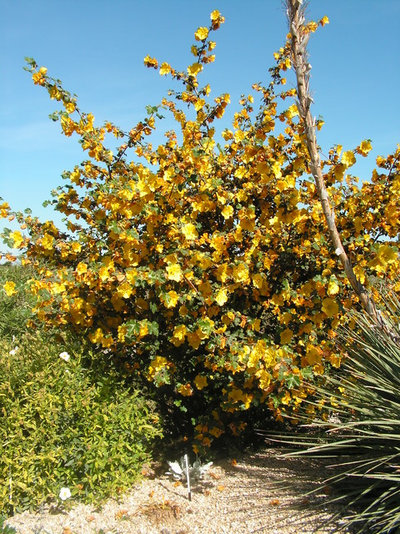
mapa-73
Botanical name: Fremontodendron californicum Common names: California flannel bush, California flannelbush
Origin: Native to California’s mountains, Arizona and northern Baja California, Mexico
USDA zones: 8 to 10 (find your zone)
Water requirement: Low; drought tolerant once established; no summer water
Light requirement: Full sun
Mature size: Up to 10 or 20 feet tall
Tolerances: Extremely drought tolerant
Seasonal interest: Prolific yellow blooms from spring into summer; evergreen
When to plant: Fall
Caution: Wear protective clothing and gloves when handling flannel bush. Hairy fibers are its inherent defense mechanism and will irritate skin. Shower and wash your clothes immediately after contact.
Distinguishing traits. Flannel bush grows quickly to 5 feet tall, eventually reaching heights of 10 to 20 feet. Make room for its irregular shape and large scale when siting it; this plant easily can outgrow its allotment.
A chaparral native, California flannel bush has a pretty inconspicuous form and foliage, even if it is oversize. Adapted to withstand prolonged periods of drought and sun, the shallow-rooted shrub is covered with leathery dark green leaves with felted undersides.
Spring flowers sell this plant; golden yellow blooms shower — typically all at once — the shrub in an explosion of 3-inch blossoms, followed by prickly seed capsules.
Popular hybrids include
Fremontodendron ‘California Glory’ (shown)
and
F. ‘Pacific Sunset’. These plants have been developed for more success in cultivation.
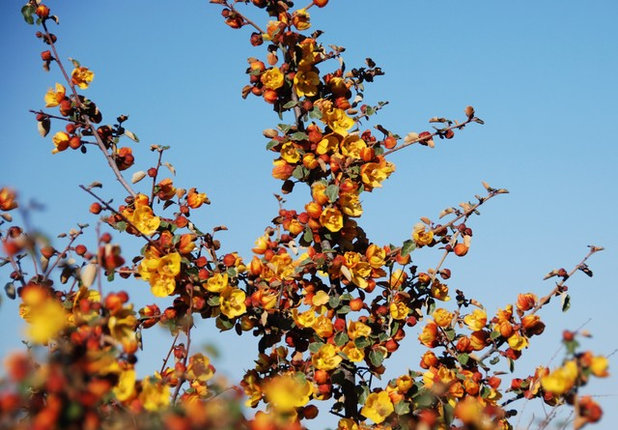
Pete Veilleux, East Bay Wilds
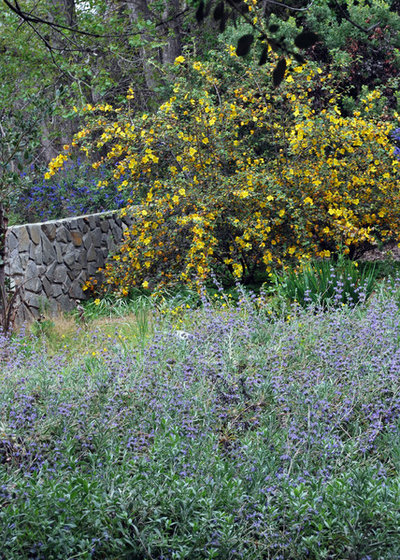
BriAnna Weldon
How to use it. Plant flannel bush on a well-draining slope, emulating its native landscape. Allow plenty of space for it to grow, spread, arch and loosely anchor a background garden point.
While most of the year you can count on its foliage to subtly fill a visual vacancy, remember in spring and summer at least one corner of the garden will sing yellow — purple-blooming salvias and native ceanothus contrast nicely and have similar watering needs. Keep it loose and casual.
Shown: With sage (
Salvia sp)
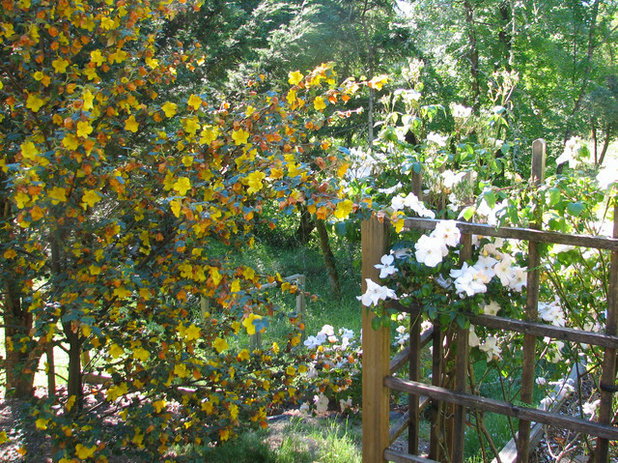
Larry McCombs/Flickr
Shown: With 'Sally Holmes' rose
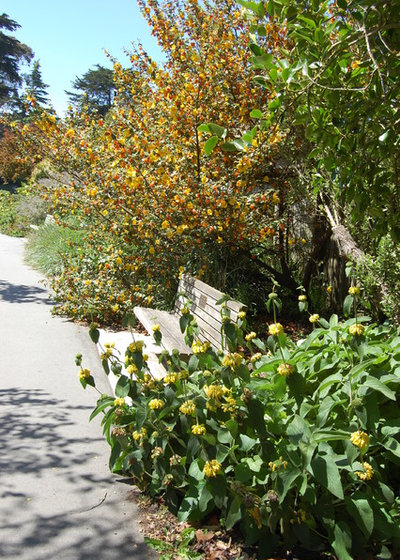
Far Out Flora
Planting notes. While California flannel bush is low maintenance, like most chaparral natives, many note its finicky nature when it comes to drainage and soil type.
It's regarded as a short-lived plant to begin with, but anything less than a sandy, sloping, well-drained site can send the plant into a death spiral. It's always helpful to observe natives in their native habitat.
The shape is very unruly, so feel free to prune and remove branches for a more manicured form. Shallow roots adapted to spreading and finding water also don’t provide much support, so plants can be staked to establish a good hold on the ground. Pinch younger plants to encourage branching early. Water lightly to establish, but otherwise this is a zero-water plant.
Shown: With Jerusalem sage





